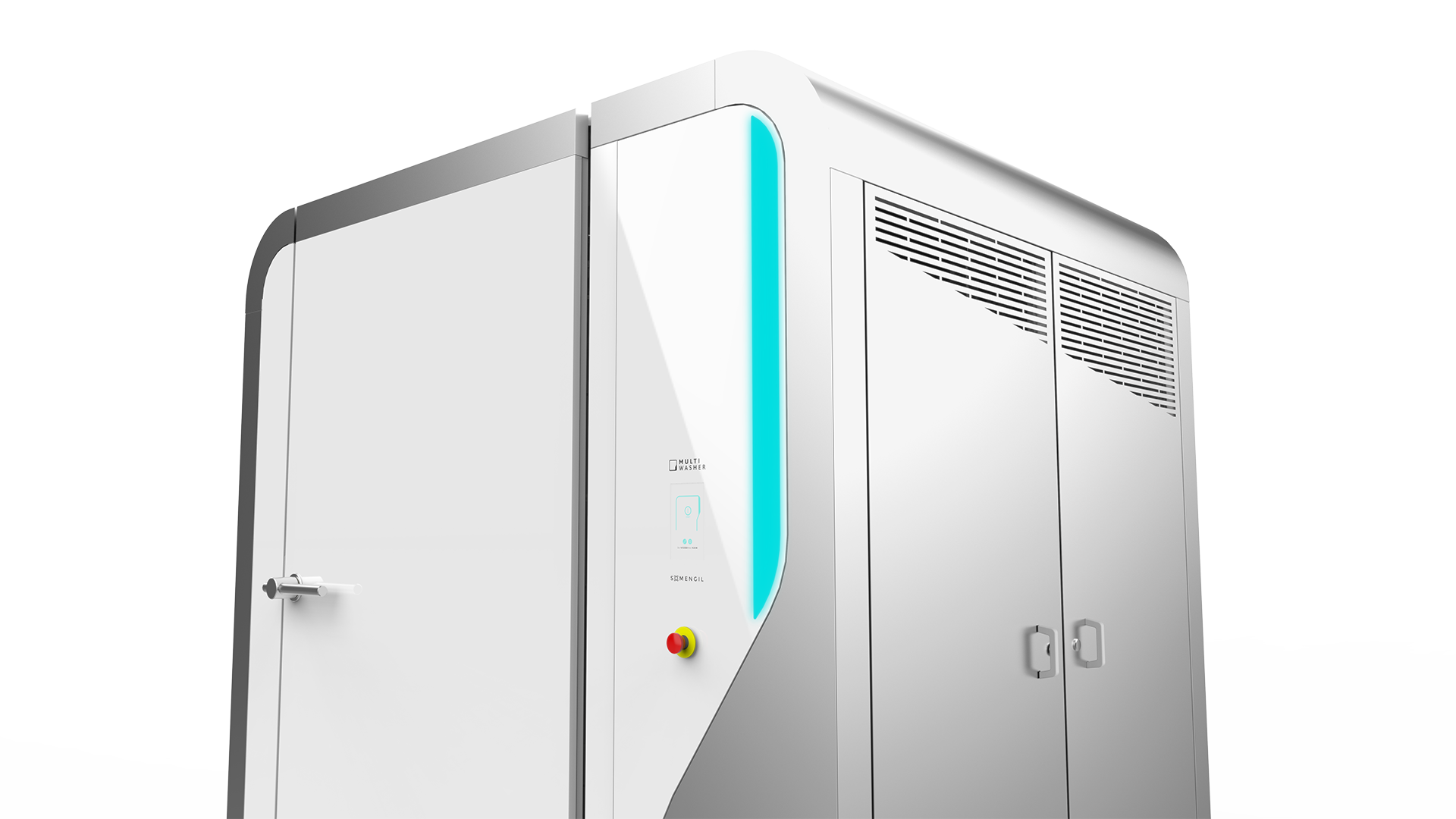Lavagem Industrial / Artigos
How to improve energy efficiency in washing?
Energy efficiency is about making the most of available resources while providing the best washing results. Here are 6 ways to improve it.

 5 minutos de leitura
5 minutos de leitura
2023-01-13 11:42:08
Washing is a recurring process that accounts for most of a company’s water and electricity consumption. Making it more energy efficient reduces environmental impact while also providing a perfect wash. These are 6 ways to increase energy efficiency in washing.
6 ways to increase energy efficiency in washing
Optimizing the use of water and energy is key to increasing energy efficiency in washing. To achieve this goal, here are 6 key tips.
1. Choose efficient equipment
The most efficient companies incorporate top-of-the-line energy-efficient equipment thatconsumes minimum amounts of water and energy with minimal losses. In addition, they also employ energy reuse systems that significantly reduce production costs.
Somengil’s MultiWasher is an industrial washing machine with efficient energy, water, and detergent consumption. This machine requires 2/3 less water than other industrial washing solutions and 70% less detergent for a perfect wash.
2. Reuse water
More and more companies are deployingwater reuse systems to save this resource. For instance, water can be reused for plumbing systems, toilet flushing, or watering outdoor spaces. Depending on the complexity, these recovery systems can save between 30% and 80% of water.
The MultiWasherautomatically reuses water between washing cycles to complete multiple washes with the same water without human intervention. It is a washing equipment that has a real impact on a company’s energy efficiency.
3. Review washing parameters
Reviewing washing parameters is kay to make this process as efficient as possible. Washing and drying times, temperatures and the amount of detergent used are some of the major factors that influence the quality and efficiency of the wash. The key is to find the right combination of these four elements for each load and the type of utensils to be washed in each cycle. Because each cycle is different, so are the washing parameters.
Technology – and in particular the Internet of Things – is a great help in optimizing washing parameters. The MultiWasher adjusts each of these parameters automatically for each load, using only the necessary amount of resources to achieve perfect results. This makes washing easier for operators and, above all, more precise.
4. Improve planning
Planning is essential for greater energy efficiency in washing processes. The first step is to create a thorough hygiene plan with information about the surfaces, equipment, tools, and utensils to wash. This plan should also encompass the cleaning methods, washing products or agents (with instructions on their safe use and storage), the frequency of washing and inspection, and a sanitizing schedule.
Becoming a benchmark in washing also requires small improves every day. Start by identifying poor working conditions and plan improvements with a real impact. For example, identify the utensils that need more thorough washing, the most difficult surfaces to wash, or the most demanding type of production to clean.
5. Automate processes
Process automation is essential in any business to increase sustainability and efficiency levels. It allows mechanical tasks to be performed with greater accuracy, without human intervention, thus increasing energy efficiency. Automation improves several areas of the company, from production to logistics or marketing – washing is no different.
The MultiWasher is an excellent example of pragmatic industrial automation. Operators can save up to 20 washing programs, and access them via an intuitive touch screen. This eliminates the need for lengthy, error-prone manual settings and time-consuming setups. Automating the setups process can reduce water and energy consumption during washing by up to 50%.
6. Follow a maintenance schedule
Maintenance is crucial to optimize and extend the life of the equipment and thus achieve greater energy efficiency. The goal is to restore equipment to its optimal performance and achieve consumption levels specified by the manufacturer. It is important to understand why machines consume more than what they are supposed to and what may be causing the difference.
In particular, predictive maintenance is an effective strategy for preventing failures in critical equipment, reducing maintenance costs, and improving customer service. Instead of reacting when a component stops working, predictive maintenance acts before a failure occurs.
Somengil in the forefront in energy efficiency
Energy efficiency in industrial washing processes is one of Somengil’s major missions. We have developed a state-of-the-art machine, MultiWasher, that sets new standards of efficiency, being at the forefront in terms of optimization of resources, automation, and ergonomics. Contact our team to see the difference in action.
Também pode gostar

Lavagem Industrial / ArtigosArtigos
“Pressures on sustainability are increasing - but they can also drive innovation.”
André Quental explains how sustainability pressures can also power innovation.
Postado em 2024-08-29

Lavagem Industrial / ArtigosArtigos
“We achieved every goal we set last year “
New markets, partners and innovations. Tony Ventura, CEO of Somengil, recaps last year and sets his sights on the future – of Somengil and the wa...
Postado em 2022-02-24























 Português
Português English (UK)
English (UK) English (USA)
English (USA) Français
Français Español
Español Deutsch
Deutsch